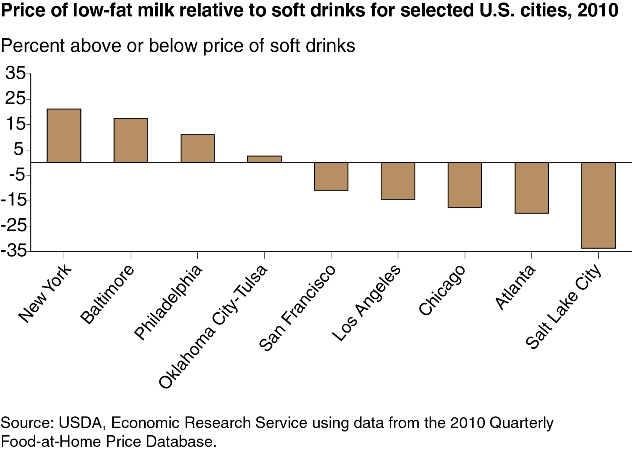Relative prices can affect food purchase decisions
- by Economic Research Service
- 10/10/2012

Food preferences, nutrition knowledge, and access to stores and restaurants all share a role with prices in consumers' food purchasing decisions. Consumers consider absolute prices when choosing which foods to buy, but they also consider prices relative to those of alternative or complementary foods. For example, soft drink prices may be fairly stable across the country and over time, but if the price of milk, juice, or another alternative beverage rises, soft drinks become relatively less expensive to the consumer. Data compiled by ERS show that in 2010, low-fat milk was 34 percent cheaper than soft drinks in Salt Lake City, while in New York City, low-fat milk was 21 percent more expensive than soft drinks. ERS researchers analyze price variations to help identify how changes in food prices can lead to changes in food purchases, food intake, and, ultimately, health. This chart appears in "What Role Do Food and Beverage Prices Have on Diet and Health Outcomes?" in the September 2012 issue of ERS's Amber Waves magazine.


